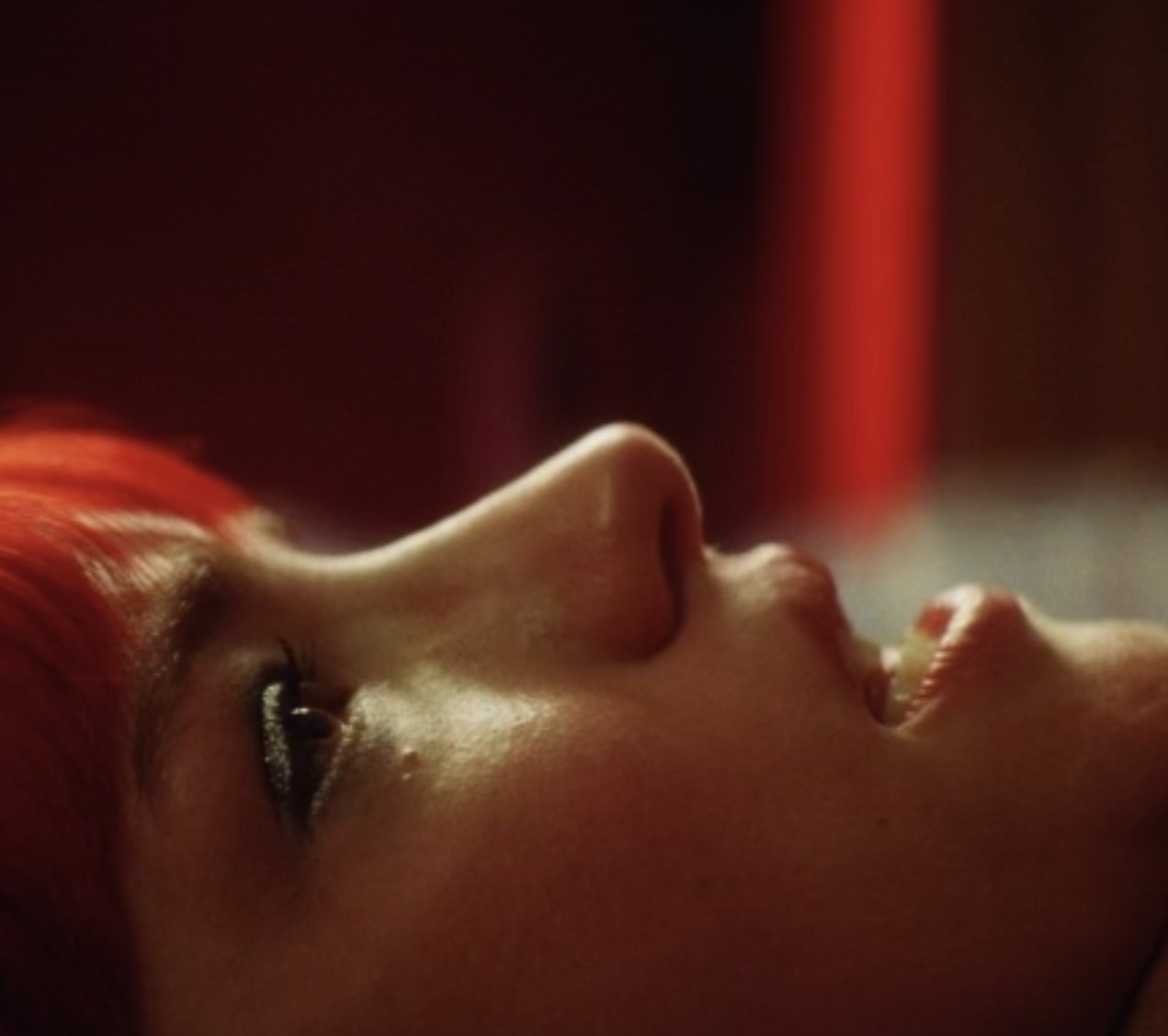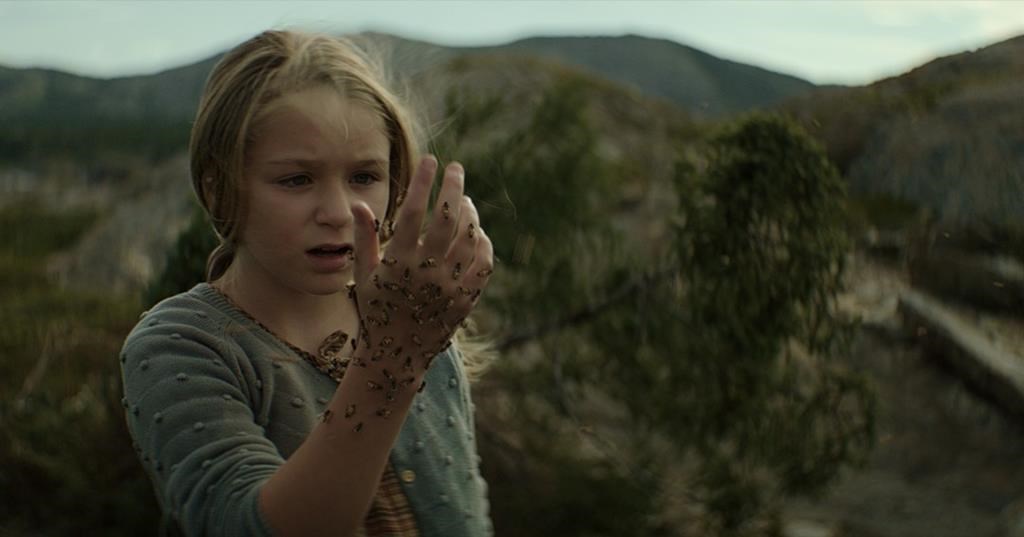Reviews
‘Strange Darling’ Fantastic Fest Review – Cat and Mouse Thriller Has Plenty of Surprises

“Do you have any idea the kind of risks a woman like me takes every time she decides to have a little bit of fun?” So says our female protagonist in writer/director JT Mollner‘s Strange Darling, a film that dares us to question the roles men and women are expected to play. Are women just prudes who don’t love casual sex? Are men just rapist serial killers waiting for their next mark? What exactly are the boundaries of consent? Strange Darling asks these questions, making for a smarter-than-you’d-expect entry into the cat and mouse thriller genre.
Following an opening scroll informing us that the film we are about to see is a dramatization of the final known killings of a serial killer’s multi-state killing spree, we are introduced to “The Lady” (Willa Fitzgerald, Scream: The TV Series) who, in an extended slow motion sequence that plays over the opening credits, is revealed to be running from “The Demon” (Kyle Gallner, Smile), and what follows is a relentless thrill ride of a film that acts as an extended, feature-length chase scene.
With an introduction like that, you’d be forgiven for thinking that Strange Darling is going to be nothing more than a gratuitously violent and misogynistic foray into the mind of a serial killer. Thankfully, Strange Darling has a lot more on its mind (and even more tricks up its sleeve), setting it apart from other genre films of that ilk. That being said, it is also one of those films that’s nearly impossible to review without spoiling, as its twists and turns happen so early and often that discussing anything past the 15-minute mark would delve into spoiler territory.
Told in 6 chapters presented out of order, Strange Darling gets a lot of mileage out of its nonlinear narrative. This makes for plenty of jaw-dropping “oh shit” moments of realization, and a highly entertaining initial viewing experience. Mollner (Outlaws and Angels) has a clear eye for visuals, shooting most of the film in harsh sunlight. Red cars, clothing and wallpaper pop against the yellows of the film’s daytime sequences, whereas the nighttime sequences are bathed in striking red and blue lighting.
Early on, a title card informs us that the film is shot on 35mm film, which is commendable, but the decision to present the narrative as a dramatization of “real” events feels unnecessary. The aforementioned opening scroll (complete with a deep-voiced, ominous narrator) immediately calls to mind The Texas Chain Saw Massacre, but whereas that film’s 16mm presentation gave it a gritty, documentary-like feel, Strange Darling‘s 35mm presentation makes it feel too cinematic at times. But hey, in this age of digital photography it’s exciting to see the format still being used.
Where Strange Darling really excels is in its casting. Fitzgerald gives an exceptionally strong performance, acting the hell out of every scene she’s in. It’s a far cry from her role in Scream: The TV Series and it’s delightful watching her play out of that sandbox. Gallner, quickly becoming a modern Scream King, has the more difficult role in that his character is playing things close to the chest for the first half of the film. Still, he delivers a subtle, and at times manic performance. Supporting turns from Barbara Hershey and Ed Begley Jr. as an old couple whose house The Lady seeks refuge in are also fun, if fleeting, bright spots.
The biggest issue facing Strange Darling is that, once all of its cards are on the table just past the hour mark (when the final chapter starts), it’s run out of creative juices. What started out as an intricately-plotted, Tarantino-esque piece of pulp devolves into an extended resolution that doesn’t really have a lot to say. It starts several conversations, but refuses to finish them (or maybe that’s the point?). That the conclusion plays out in a predictable, straightforward manner is a shame, considering everything that comes before is so subversive.
In the end, Strange Darling refuses to dig deeper with the lofty questions it poses, but that doesn’t erase the good will the first two acts of the film has built up. What we are left with is a grim little thriller whose lofty ambitions prove to be too much for it in the end, but you’ve got to give it credit for trying.
Strange Darling made its world premiere at Fantastic Fest and is currently seeking distribution.


Reviews
‘The King Tide’: An Island Town Rots with Moral Decay in Canadian Folk Horror Fable [Review]

The opening scenes of director Christian Sparkes’ The King Tide set an ominous tone: a powerful storm takes down the power lines of a small island town as a pregnant woman loses her child while her dementia-suffering mother sits nearby. In the morning, as the town takes stock of the damage and the power is restored, a surprising discovery is found in an overturned boat in the harbour: a baby girl…with the ability to heal.
Writers Albert Shin and William Woods, working from a story by Kevin Coughlin and Ryan Grassby, treat the story as something of a morality tale mixed with a fable. Following the cold open, the action jumps ahead 10 years at a point when the unnamed island (the film was shot in Newfoundland, Canada) is thriving. The fishing is bountiful, the islanders are self-sufficient and have cut ties with the mainland, and most everyone is happy.
As characters are prone to saying, it’s all thanks to Isla (Alix West Lefler), the miracle baby who has grown up worshipped by the islanders. While Mayor Bobby Bentham (Clayne Crawford) and his wife Grace (Lara Jean Chorostecki) endeavor to raise Isla like any other little girl, the reality is that the island’s entire ecosystem revolves around her miraculous powers. It is only because of Isla that they survive; every aspect of their lives – from medicine to food – relies on her.
Each day the citizens line up for their allotted time with the young girl – be it to stave off breast cancer, like Charlotte (Kathryn Greenwood), or recover from another night of heavy drinking like former doctor, Beau (Aden Young). There’s even a predetermined schedule for when she will go out on the boats and use her power to lure fish into the nets.

One fateful day, Bobby succumbs to peer pressure and alters Isla’s schedule at the last minute to accompany cod fishermen Marlon (Michael Greyeyes) and Dillon (Ryan McDonald). A childish game with fatal consequences is played, but with Isla indisposed, a young boy, who would have otherwise been fine, dies. And while the rest of the community grieves, it is Isla who is completely shaken and, unexpectedly, loses her powers.
Suddenly the entire balance of the island is thrown off. Folks like Grace’s mother, Faye (Frances Fisher), who relied on Isla to keep her dementia at bay, suddenly reckon with mortality, while the food security of the town is called into question. Faye’s late-night “support group” meetings take on an urgent and secretive tone and the townspeople claim ownership of Isla’s time despite Bobby and Beau’s protests that she needs rest to recover from her trauma.
Like the best thrillers, the politics and personalities within the community come into play as morals are compromised and the good of individuals vs the collective is played out in increasingly desperate situations. The King Tide excels because it is interested in exploring the competing motivations of the townspeople, while also resolutely refusing to paint anyone as inherently good or bad. These are desperate people, determined to remain independent and free from outside interference, while protecting their trapped-in-amber way of life.

These developments work because there’s a humanity to the characters and The King Tide wisely relies heavily on its deep bench castoff character actors to drive the conflict. Crawford is the de facto protagonist of the ensemble and he’s also the most straightforward character: Bobby is a good man and a loving father, but he’s no white knight. At several points in the film, his willingness to acquiesce to the demands of the community and retain his power causes events to spiral further out of control.
Even more fascinating are Grace and Faye, two commanding women whose capacity for maternal love is matched – or eclipsed – by their own self-interests. A mid-film discovery about Isla’s power reframes Grace’s priorities, ultimately pitting her against her husband. As a result, Grace is incredibly compelling and frustrating (in a good way) and Chorostecki, who has done great genre work on both Hannibal to Chucky, plays the moral ambiguity exactly right. Grace is a fascinating and flawed human character in a film filled with them.
The same goes for Fisher, who deftly balances Faye’s grandmotherly love for Isla with the needs of the community and, by extension, her own health demands. In the hands of a lesser performer, it would be easy to hate Faye for her actions, but Fisher’s performance perfectly captures the fierce determination and fear that drives the island’s matriarch.
Finally, there’s Aden Young, The King Tide’s secret weapon. The ten-year jump reveals that Beau has undergone the most significant transformation: while everyone else has benefitted from Isla’s powers, her presence has eliminated the need for a doctor. With the clinic effectively shuttered, Beau has become an alcoholic; a shell of his former self with no purpose.
Like Bobby, Beau is the easiest character to root for because of his selfless desire to protect Isla, but Young (renowned for his work with Crawford on Rectify) unlocks the character’s tragic pathos and, in the process, becomes the film’s emotional anchor.

Framing the moral decline of the islanders and anticipating the unexpectedly devastating climax is the natural beauty of Newfoundland. As shot by cinematographer Mike McLaughlin, there’s a steely beauty to the geography, resplendent with rocky cliffs, pounding surf, and gusty bluffs that reinforce the islanders’ isolation.
There’s a fierce pride in their struggle to survive independently, evident in the simple lodgings and the antiquated alarm bell that is rung whenever fishing ships from the mainland stray too close. It’s a chilly, atmospheric calling card for one of the most picturesque provinces in Canada, but it is a perfect complement for the folk horror narrative.
Armed with serene, beautiful cinematography, murky moral developments, and a deep bench of talented character actors, The King Tide is a quiet gem that demands to be seen. It’s one of the year’s best genre films.
The King Tide is in theaters April 26, 2024.













You must be logged in to post a comment.